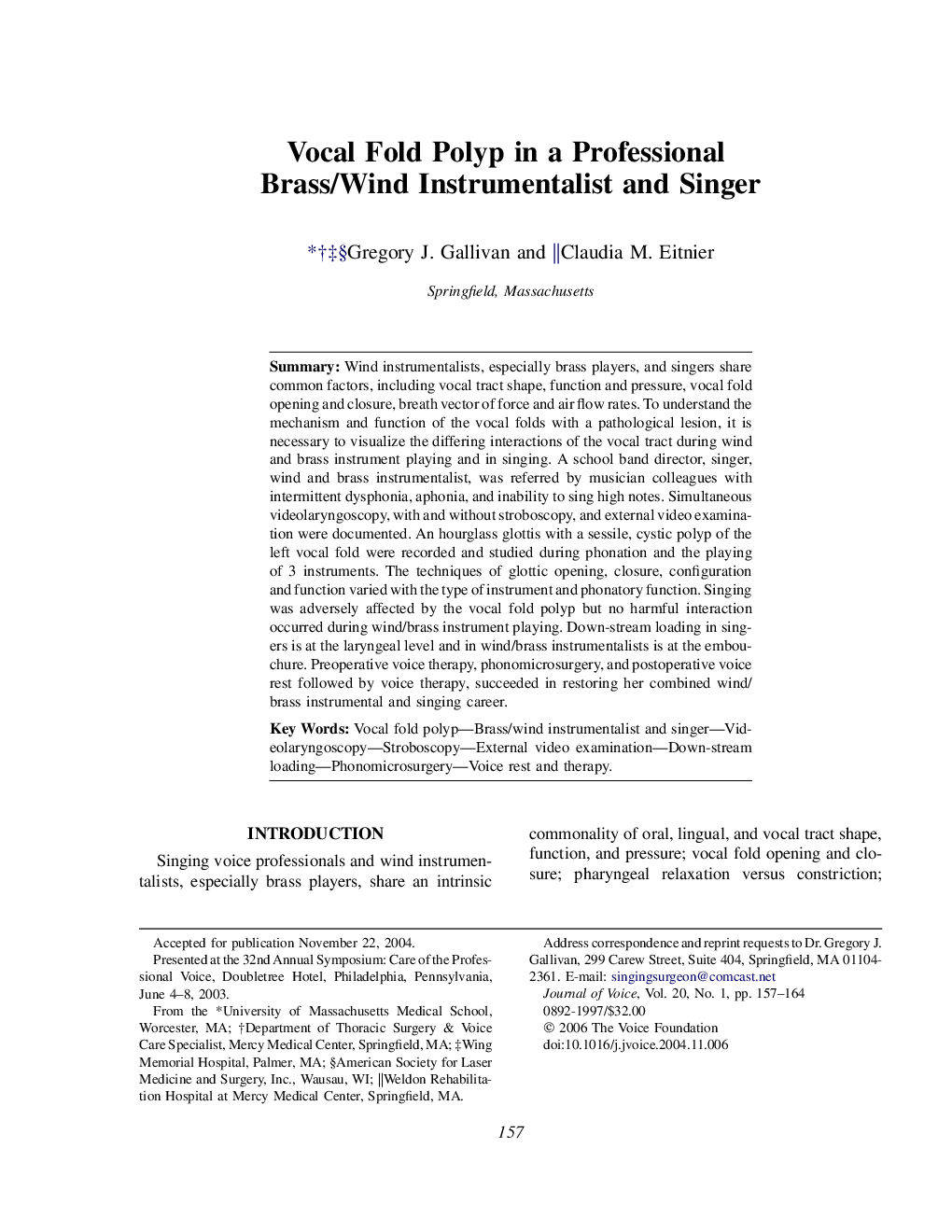| Article ID | Journal | Published Year | Pages | File Type |
|---|---|---|---|---|
| 1102662 | Journal of Voice | 2006 | 8 Pages |
SummaryWind instrumentalists, especially brass players, and singers share common factors, including vocal tract shape, function and pressure, vocal fold opening and closure, breath vector of force and air flow rates. To understand the mechanism and function of the vocal folds with a pathological lesion, it is necessary to visualize the differing interactions of the vocal tract during wind and brass instrument playing and in singing. A school band director, singer, wind and brass instrumentalist, was referred by musician colleagues with intermittent dysphonia, aphonia, and inability to sing high notes. Simultaneous videolaryngoscopy, with and without stroboscopy, and external video examination were documented. An hourglass glottis with a sessile, cystic polyp of the left vocal fold were recorded and studied during phonation and the playing of 3 instruments. The techniques of glottic opening, closure, configuration and function varied with the type of instrument and phonatory function. Singing was adversely affected by the vocal fold polyp but no harmful interaction occurred during wind/brass instrument playing. Down-stream loading in singers is at the laryngeal level and in wind/brass instrumentalists is at the embouchure. Preoperative voice therapy, phonomicrosurgery, and postoperative voice rest followed by voice therapy, succeeded in restoring her combined wind/brass instrumental and singing career.
